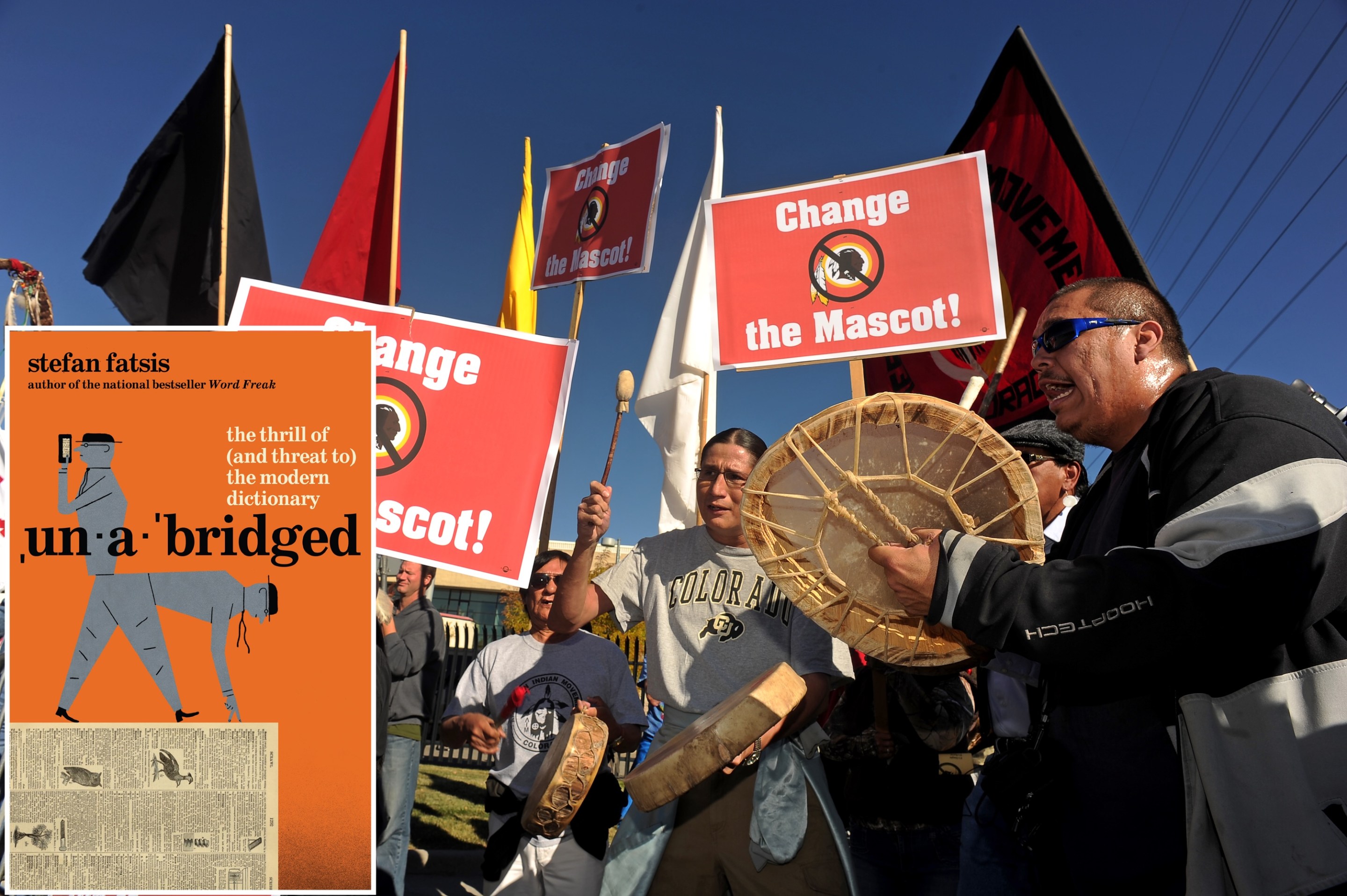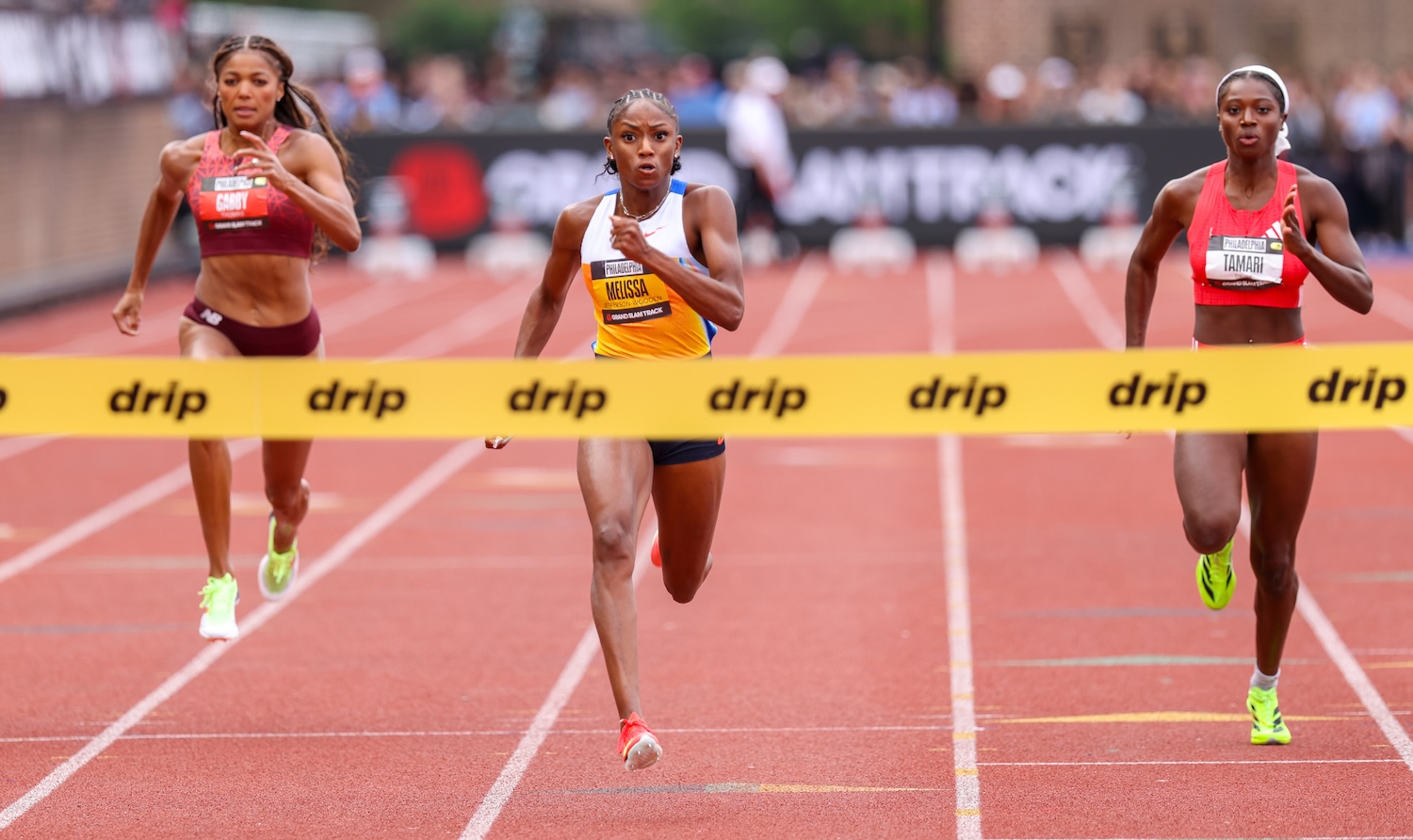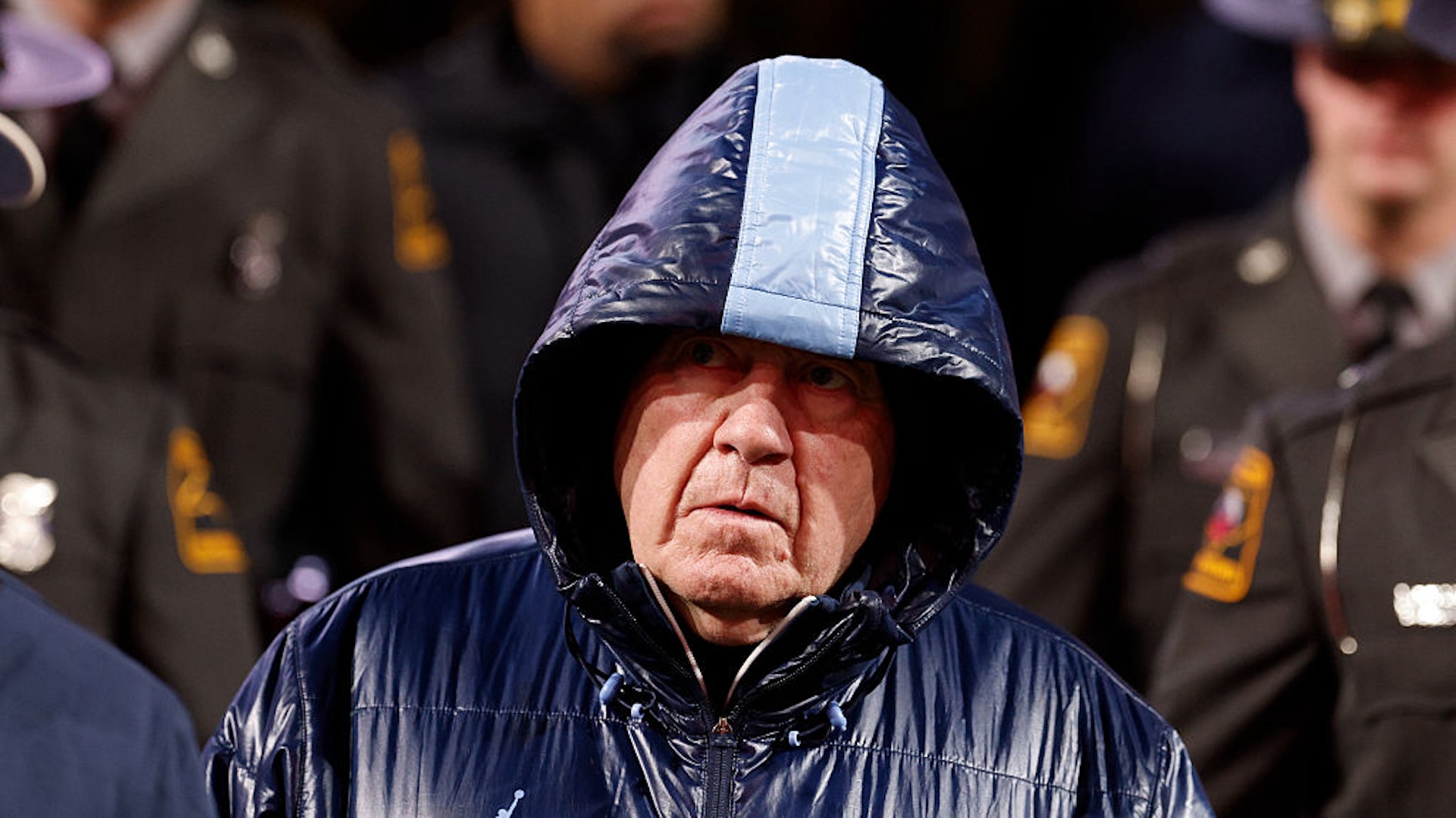A few years ago, when the conversation over the racist nickname and racist iconography of the NFL team that maintained racist hiring policies longer than any other NFL team was a sad constant in the sports media discourse, I was embedding with the dictionary publisher Merriam-Webster. Merriam was letting me cosplay as a lexicographer to write a book about the future of the dictionary in a digital world. I traveled regularly to the company's old brick building on a hill in Springfield, Mass.—a few blocks from a strip club called the 5th Alarm Lounge, near the fire station—to watch the language sausage get made, and make some of my own.
That meant I had access to the Consolidated Files: 16 million three-by-five slips of paper, known as citations, or "cits"—pronounced sites—with examples of word usage culled for more than a century from newspapers, magazines, academic publications, trade journals, contemporary fiction, advertisements, radio transcripts, television shows, annual reports, government reports, cereal boxes, photo captions, comic strips, seed catalogs, restaurant menus, car manuals, airline tickets, you name it. The slips are crammed into alphabetized drawers in rows of chest-high, brick- or tan-colored metal filing cabinets of varying sizes and styles that stretch around the second-floor editorial room like dominoes.
To my eyes, the files were impossibly cool. Full-page clippings folded one, two, three, four times, like a school note stuffed in a kid's back pocket. Black-and-white photostats that began appearing in the 1950s, when Philip Gove, editor-in-chief of Merriam's iconic 1961 unabridged dictionary (four inches thick, 13-and-a-half pounds, 465,000 words), instructed his staff to record multiple citations from single passages to avoid the tendency to flag unusual words while ignoring run-of-the-mill ones. Early computer printouts with truncated tails on the g, j, p, q, and y, which reminded me of an annoyed college professor who, on a paper I wrote in the '80s, underlined every last one.
The aesthetics make the cit files a work of art. Their content makes them an irreplaceable archive of American English. The cards hold forensic clues to how identically trained curators compiled and adjudged quotidian changes in the language—stamps and dates and handwritten comments about what belonged in a dictionary; clinical assessments of the state of American English and American culture on any given day. Merriam editors don't use them much anymore. But if you want to learn the why of the history of a word, you can't do much better than the Consolidated Files.
So: the nickname of the then-hapless team that played in Maryland a traffic jam away from the nation's capital. (I live in D.C. Every time I attended a game in that stadium I vowed never to return.) I wasn't alone in believing that the continued, stubborn existence of the name—"We'll never change the name .... It's that simple. NEVER—you can use caps," universally reviled owner Daniel Snyder said infamously in 2013—made redskin the most widely used racial slur in print.
It boggled the mind that the team had gotten away with propagating the word for as long as it did. How had that happened? Could Merriam's slips help explain the linguistic journey of this notorious word?
At the time, redskin in both the 1961 book edited by Philip Gove, Webster's Third New International Dictionary, Unabridged, and in the company's free online dictionary was defined as "a North American Indian" with a monitory label—usually offensive—that gave Snyder room to claim, as he had done for years, that the name wasn't racist. (Only usually offensive! Not always!) But the last time Merriam had updated redskin, for its 2009 Learner's Dictionary, it upgraded the label to something more definitive—informal + offensive—and appended a note: "The word redskin is very offensive and should be avoided." That wasn't quite as strong as the note in the same book at the entry for the n-word—"This is one of the most offensive words in English. Do not use this word."—but it was strong nonetheless.
In 2005, a scholar at the Smithsonian Institution's National Museum of Natural History, Ives Goddard, published a paper asserting that redskin had benign origins. Goddard traced the word to phrases used by Native Americans to describe differences in skin color with colonists, which were translated by French-speaking arrivals in the 1760s to peau-rouge and then into English. In the early 1800s, redskin was used by white people and, in translation, Native Americans alike. "I turn to all, red skins and white skins, and challenge an accusation against me," Black Thunder, chief of the Meskwaki, said at a War of 1812 treaty conference, according to a translation published in a national magazine, Niles Weekly Register.
But as violence against American Indians became government policy, redskin as used in newspapers and literature assumed a derogatory sense, framed in stories about savage Indians and righteous white Americans. In the first edition of Merriam's Collegiate dictionary in 1898, redskin was labeled "often contemptuous." In the unabridged editions of 1909 and 1934, the label disappeared. What happened? In the first half of the 20th century, Native Americans, increasingly perceived as a dying race instead of as foes on the frontier, faded from mainstream consciousness except as mythologized caricatures in pop culture: Wild West shows; cigar store Indians; The Lone Ranger; John Ford movies like Drums Along the Mohawk and Stagecoach; advertisements using words like wampum and heap-big; and sports mascots, like Chief Noc-a-Homa of MLB's Atlanta Braves. (Dictionary.com labels the second noun sense of brave, "a warrior, especially among North American Indian tribes," as sometimes offensive.)
The aforementioned NFL team was founded in 1932 in Boston, where it played for a few years before moving to the capital, and originally was named the Braves. To avoid confusion with the city's baseball team of the same name, owner George Preston Marshall renamed the team in 1933. He chose the replacement in order to keep the team's red-and-white logo, a profile of a Native American in a headdress. Marshall was an avowed segregationist who went on to football infamy: He was the last NFL owner to sign African American players, in 1962, and then only after President John F. Kennedy threatened to evict the team from its brand-new home, District of Columbia Stadium (later renamed for the slain Robert F. Kennedy), which sat on federal land.
To the white purveyors of popular culture, Native American stereotyping appeared harmless. Which means that the uses of redskin in the sources read by Merriam-Webster editors were seen as harmless, too. The word was used as a synonym for "American Indian" for so long and with such deeply embedded casualness that it might have been unrecognizable as offensive to the editors who dispassionately collected usage samples and drafted definitions from them. That was white culture failing to recognize how the people being defined—Native Americans—viewed the word doing the defining—redskin. The nickname of a sports team wouldn't have raised an eyebrow.
The oldest redskin slips in the Consolidated Files were compiled for Webster's New International Dictionary, Second Edition, Unabridged, published in 1934. "This is like one of those Redskin stories where the noble savages carry off a girl and the honest backwoodsman with his incomparable knowledge follows the track," reads a typed quotation from the 1913 Joseph Conrad novel Chance. For the next four decades, citations for redskin portray the word as a common derogation. A 1959 slip quotes the literary critic Philip Rahv describing two types of American writer: the paleface and the redskin. Of the half dozen or so cits referencing Rahv's categories, from places like the highbrow Times Literary Supplement and Saturday Review, none judges them explicitly offensive.
Historically, dictionaries were all over the map on the word. In 2002, a University of Iowa linguist, Robert S. Wachal, examined the treatment of 26 ethnic slurs, from bohunk (for a Bohemian) to wop (Italian), in 25 dictionaries dating to the 18th century. Redskin displayed the greatest range: from no label in a handful of books to not the preferred term, a common appellation, informal, offensive, derogatory and racially offensive, often disparaging, and taboo and dated.
The definition progressed over the decades from inoffensive to kinda offensive to officially offensive, with some back-and-forth in between. In the citation files I found a slip added in 1945, a line from W. Somerset Maugham’s novel The Razor's Edge:
"'... is that poor Larry still among the Redskins?' For that was the disrespectful way in which she was accustomed to refer to the inhabitants of God’s Own Country."
I didn’t find a record of correspondence among Merriam editors, but that might have been enough to justify adding usu. taken to be offensive to the entry in Webster's Third. Philip Gove didn't appear to weigh in on what to do about the label in subsequent abridgments of the big book. Slips used to draft definitions for dictionaries published in the 1960s and early '70s don't mention any offensive connotation, and the label disappeared again.
But then the culture, and Merriam, shifted. In 1968, students at Dartmouth College demanded the school drop its mascot, an undergraduate dressed in Native American costume. "I've often wondered to myself if the people who owned these teams ever stopped to think what goes through the mind of a 10-year-old Indian kid on a reservation in North Dakota when he picks up a sports page and reads a headline, 'Redskins Scalp Chiefs'?" a Dartmouth student, Bill Yellowtail, told the New York Times in a 1971 story about growing opposition to Native nicknames and mascots. (Dictionary.com labels the fourth noun sense of chief, "boss or leader," as informal: sometimes offensive.)
The next year, Washington newspapers published stories in which Native leaders complained about the football team's name, comparing its use to other slurs. The team's president, the white (and white-shoe) lawyer Edward Bennett Williams, met with Native groups but dismissed any concerns. "This is getting silly," he said. "Suppose blacks get together and demanded Cleveland's football team stopped calling itself the Browns, or ornithologists insisted that Baltimore was demeaning to birds because the name is the Orioles."
Here's where the slips of paper in Merriam's files demonstrate their indispensable value. Almost every example I've cited is electronically discoverable today. The editors' notes—written on pink slips of paper referred to by their color ("pinks") to distinguish from the differing purposes of white, blue, and orange ones—are not. A Merriam editor pasted on a slip the definition of redskin from a rival dictionary published in 1973 that bore the monitory label considered offensive. Four years later, in March 1977, two Merriam editors, Mairé Weir Kay and Dan Hopkins, had a conversation following up on that slip about how to treat redskin (and paleface) in the fourth edition of Merriam's School Dictionary.
"This sounds like an offensive term to me," Kay wrote. "Couldn't it be excluded as a smear word," she asked, citing slurs for Jewish, Italian, and Black people. Hopkins replied that there was "significant difference in intent in the redskin/paleface pair as compared to" the other words. "I'm inclined to agree that they can be dropped w/out real harm (obviously, both must go if either does)."
I found in the files a letter from a Joyce C. Brunette of Washington, D.C., received by Merriam on December 6, 1977, and typed on two sides of a white card, that would have supplied editors with additional evidence:
You give the meaning of the word redskin as an American Indian .... It may be what you call us and this is racist. We do not refer to ourselves as redskins any more than a Jew refers to himself as a kike. So please make the next edition of the dictionary non-racist and indicate that the meaning of the word redskin is abusive and insulting. Thank you.
The next year, Kay and another editor, E. Ward Gilman, resumed the conversation about removing redskin from the children's dictionary. It wasn't the n-word, Gilman wrote, "but ... it is hardly a term of praise or even neutrality." Replied Kay: "It is not a needed term so I'd drop it if it can be felt as offensive." "Can be felt as offensive" is materially different from "is offensive," but impressions of the word were shifting.
Two more pieces of info were added to the files in 1980: a chart clipped from an issue of Maledicta, an academic journal about offensive language, showing redskin to be a more familiar slur than cracker, redneck, or whitey, which were labeled offensive or disparaging; and a letter to Merriam from Bert M. Samqua, associate editor of the Alligator Times, a newspaper published by the Seminole Tribe of Florida. Samqua praised Merriam's dictionaries. But he said that the definition of redskin was "not only demeaning, but not even a true description."
He went on to shame Merriam by throwing back its own definitions of red:
Are all, if any, Indians actually 'red'? If so in what sense—color (: the color of blood or of the ruby) or the endorsement of a radical social or political change (: communist). I suppose with some interpretation you could use "in the red" because we as a people definitely were in loss (i.e. one continent). If you are to use this word at all you should explain that this could be considered both a slang expression, and usually taken to be offensive.
There's a stamp on the slip—USED FOR 9 COL, the 1983 edition of the Collegiate, where the word was labeled usu. taken to be offensive, another step on the path to official, linguistic disgrace.
It would take the Washington football team 37 more years to abandon the slur—and the logo of a Native American man with two feathers—and change its name, temporarily to the Washington Football Team and then, in 2022, after millions of dollars in brand-testing and focus-grouping, to the Commanders. Three more years would pass before Donald Trump this July threatened to withhold funding for a new stadium in D.C.—on the site of the team's old one, built back when George Preston Marshall still fielded an all-white team—if the current rich-dude owners didn't revert to the racist nickname the team sported for almost 90 years. ("This is Trump's whole movement in rancid miniature: extolling and bringing back the bad times, one reflexive trip on Beelzebub's hamster wheel after another," Ray Ratto wrote on this site.) It was, predictably, an empty threat, at least for now; D.C.'s city council last month approved a multibillion-dollar deal for a new stadium, no nickname provisos attached.
But the football team didn't drop its name because dictionaries, including those published by Merriam, had by this decade agreed that redskin is straight-up offensive, or because the team had been the target of decades of protests and lawsuits and boycott campaigns. It dropped the name because corporate behemoths including FedEx, Amazon, Target, and Walmart said they would stop sponsoring the team if it didn't. Lexicographers can only document change in the language. What people do with the language is out of their hands.

Adapted from Unabridged: The Thrill of (and Threat to) the Modern Dictionary, published this month by Grove Atlantic. Order it here.







